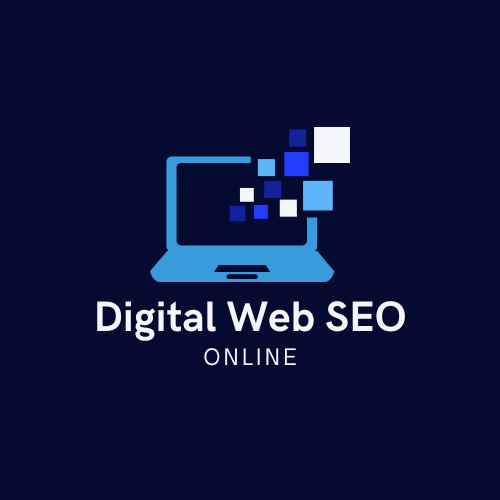In today’s digital era, establishing a robust online presence is essential for businesses aiming to thrive in a competitive marketplace. Central to this endeavor are digital marketing, web development, and search engine optimization (SEO). These interconnected disciplines work together to enhance a brand’s visibility, attract targeted traffic, and drive conversions.
Understanding Digital Marketing
Digital marketing encompasses all marketing efforts that utilize the internet or electronic devices. Businesses leverage digital channels such as search engines, social media, email, and websites to connect with current and prospective customers. The primary goal is to promote products or services through various forms of digital media.
Key Components of Digital Marketing:
- Search Engine Optimization (SEO): Optimizing website content to rank higher in search engine results, thereby increasing organic traffic.
- Content Marketing: Creating and distributing valuable, relevant content to attract and engage a target audience.
- Social Media Marketing: Utilizing social media platforms to promote products or services and engage with audiences.
- Pay-Per-Click (PPC) Advertising: Running paid ads that appear on search engines or social media platforms to drive traffic to a website.
- Email Marketing: Sending targeted emails to prospects and customers to nurture relationships and promote offerings.
- Affiliate Marketing: Partnering with individuals or companies to promote products or services in exchange for a commission.
- Online Presence Management: Maintaining and optimizing all aspects of a brand’s online presence, including websites, social media profiles, and online reviews.
The Role of Web Development in Digital Marketing
Web development involves building and maintaining websites. A well-developed website serves as the cornerstone of a digital marketing strategy, providing a platform for content, facilitating user engagement, and enabling conversions.
Key Aspects of Web Development Influencing Digital Marketing:
- Responsive Design: Ensuring the website is accessible and functional across various devices and screen sizes.
- User Experience (UX): Designing intuitive navigation and interactive elements to enhance user satisfaction.
- Site Speed Optimization: Improving page load times to reduce bounce rates and improve user engagement.
- Secure Sockets Layer (SSL) Implementation: Establishing secure connections to protect user data and build trust.
- Content Management Systems (CMS): Utilizing platforms that allow easy content updates and management.
Search Engine Optimization (SEO): Bridging Digital Marketing and Web Development
SEO is the practice of enhancing a website to improve its visibility on search engine results pages (SERPs). It involves both technical and creative elements, requiring collaboration between digital marketers and web developers.
Types of SEO:
- On-Page SEO: Optimizing individual web pages to rank higher and earn more relevant traffic. This includes optimizing title tags, meta descriptions, headers, and content.
- Off-Page SEO: Enhancing a website’s authority and reputation through external factors, primarily backlinks from other reputable sites.
- Technical SEO: Improving the technical aspects of a website, such as site speed, mobile-friendliness, and crawlability, to enhance search engine indexing.
- Local SEO: Optimizing a website to attract traffic from local searches, crucial for businesses serving specific geographic areas.
- E-commerce SEO: Specialized strategies to improve the visibility of online stores, focusing on product pages and category structures.
Best Practices for Integrating SEO in Web Development:
- Semantic HTML: Using proper HTML tags to define content structure, aiding search engines in understanding page hierarchy.
- Descriptive URLs: Creating clean, descriptive URLs that include relevant keywords to improve click-through rates.
- Optimized Images: Compressing images and using descriptive alt text to enhance page load speed and accessibility.
- Internal Linking: Establishing a logical internal linking structure to distribute page authority and guide users through the site.
- Mobile Optimization: Ensuring the website is fully functional on mobile devices, considering Google’s mobile-first indexing.
The Symbiosis of Digital Marketing, Web Development, and SEO
The integration of digital marketing, web development, and SEO is vital for creating a cohesive online presence.
- Enhanced Visibility: SEO strategies improve search engine rankings, making it easier for potential customers to find the website.
- Improved User Experience: Web development practices that focus on usability and performance lead to higher user satisfaction and engagement.
- Effective Content Delivery: Digital marketing efforts are amplified when delivered through a well-optimized and user-friendly website.
Developing a Comprehensive Strategy
To harness the full potential of digital marketing, web development, and SEO, businesses should consider the following steps:
- Conduct a Website Audit: Assess the current state of the website to identify areas for improvement in design, functionality, and optimization.
- Keyword Research: Identify relevant, high-traffic keywords to target in content and meta tags.
- Content Strategy: Develop a plan for creating and distributing valuable content that addresses the needs and interests.









